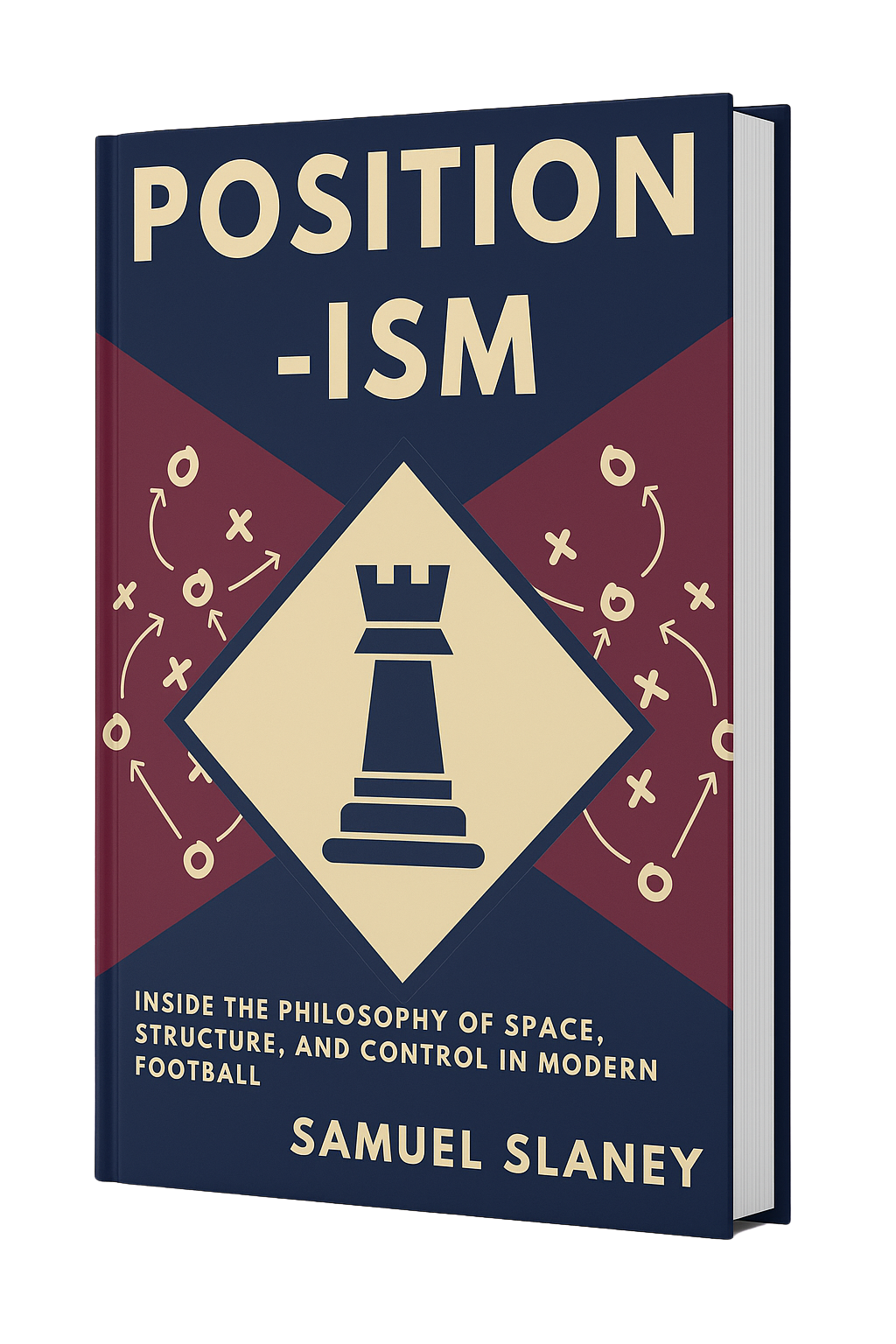Modern Football’s Chess Game: Positionism vs Relationism
“If football is a metaphorical game of chess, Positionism is the rook and Relationism is the knight.” — Samuel Slaney, Positionism
Modern football has never been more tactical, and beneath the surface of every match lies a deeper philosophy that shapes how teams play, move, and ultimately win. In Positionism, I explore one of football’s most profound tactical frameworks by drawing an unexpected parallel between the pitch and the chessboard.
Positionism: The Rook
The rook is not merely powerful because of its reach — it is powerful because of its predictability, structure, and capacity to dominate when the board is orderly. It thrives in open files, asserting control through linear, unobstructed movement. In tactical football, this mirrors the core tenets of Positionism: clarity of roles, disciplined occupation of zones, and the orchestration of positional superiority.
Positionist systems operate like grid-based logic. Each player’s spatial assignment is non-arbitrary — it’s calculated to manipulate the geometry of the pitch. Rather than relying on improvisation, Positionism imposes structure onto the game, compelling the opposition to react to its spatial configuration. The ball is circulated not for possession’s sake, but to provoke dislocations in the opposing shape — shifting, stretching, and destabilising defensive lines. It’s not chaos — it’s controlled geometry. In this model, football becomes architectural: patterns are drawn, zones are layered, and superiority is built through premeditated occupation and progression.
The Knight’s Dance: Relationism
In contrast, Relationism aligns with the knight — not just in movement, but in philosophy. The knight’s path is indirect, angular, and unconventional. It bypasses linear structure in favour of adaptability. Similarly, Relationist football thrives on emergent patterns, inter-player connections, and moment-to-moment responsiveness. It values proximity, not rigidity; cohesion over control.
Where Positionism seeks to fix structure and manipulate space, Relationism seeks to inhabit and co-create it in real time. Triangles, third-man runs, rondos in motion — these are not drills but guiding principles. Players operate less like parts of a system and more like neurons in a network — relational intelligence is paramount. Movement is not pre-assigned but co-authored, shaped by cues, triggers, and mutual understanding. This style of play prizes rhythm over repetition, intuition over instruction.
If Positionism is the blueprint, Relationism is the improvisation within its boundaries.
Clash or Collaboration?
The beauty of football is that it doesn’t demand allegiance to one school. Like in chess, where great players know when to rely on the strength of a rook or the cunning of a knight, elite teams often blend both principles. The best managers understand the tension between structure and spontaneity, using one to unlock the other.
But to master either, you must first understand them in their pure form.
Inside the Philosophy of Space, Structure, & Control
Positionism dives deep into the tactical foundations of Positionist football, helping coaches, analysts, and fans decode what makes this approach so effective at the highest levels. Whether you’re on the training pitch or studying the game from the stands, this book will sharpen your understanding of how structure wins.
Now available on Amazon in both eBook and Paperback formats.

